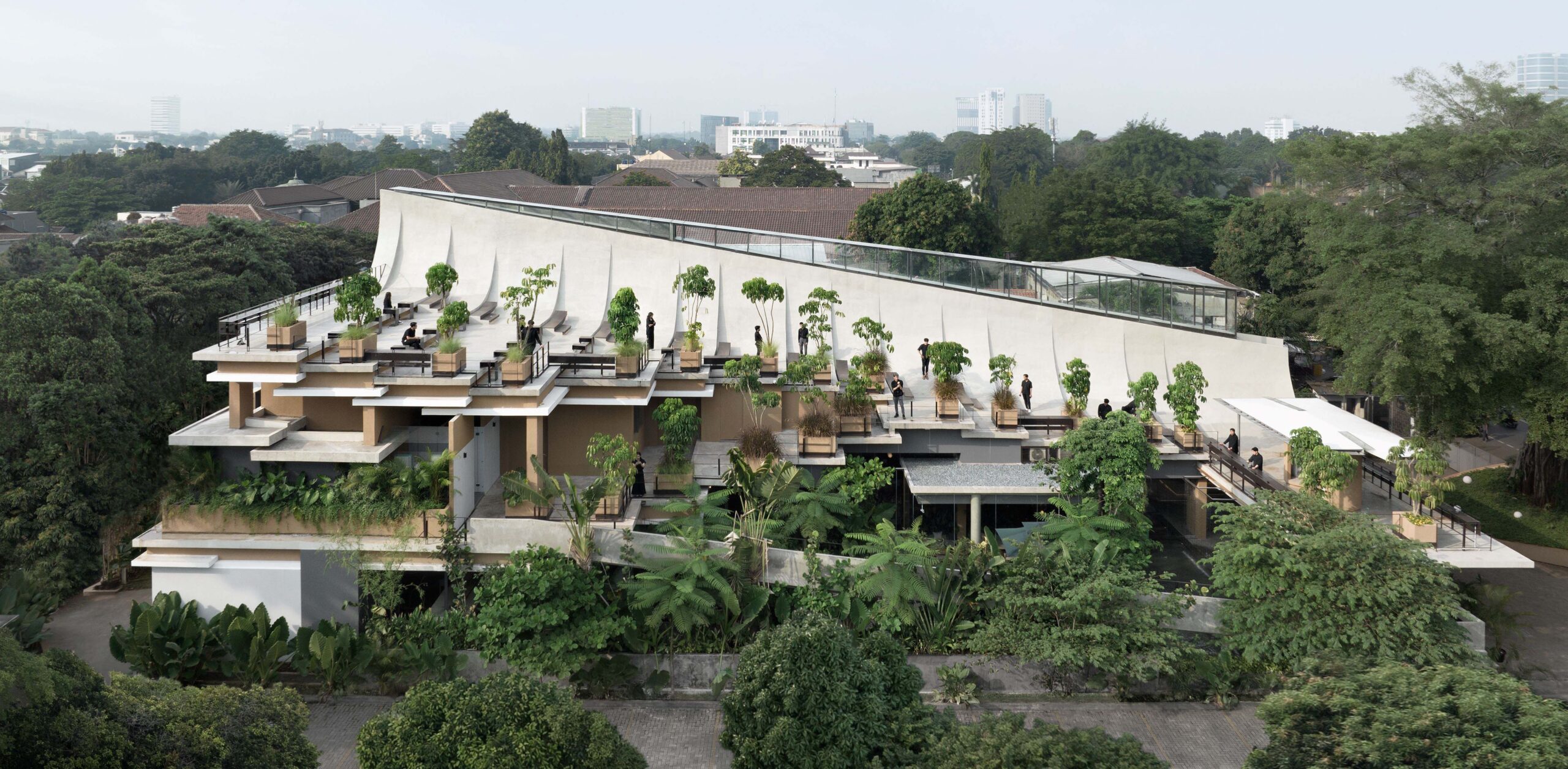Glass-brick facade pulls light into Belgian infill home by Delmulle Delmulle Architecten


Walls of glass brickwork pull natural light into Glass Brick House, a home on an enclosed infill site in Belgium designed by local studio Delmulle Delmulle Architecten.
The 98-square-metre, three-storey home, which was named for its glass facade, occupies a small gap within a terraced street in Ghent, surrounded by neighbouring buildings on three sides.

The nature of this site meant that windows could only be made in the home's facade, which led to Delmulle Delmulle Architecten fronting its upper two storeys with a double-skinned facade of glass bricks and full-height glazing.
"The house is situated on a very challenging plot – extremely small and completely enclosed on all sides," studio founder Seger Delmulle told Dezeen. "The main challenge was to make the most of the minimal available space and natural light."

Glass Brick House is organised with what Delmulle describes as an "inverted" layout, with bedrooms on its lower floor and living, kitchen and dining spaces above, connected by a metal spiral staircase.
The facade of the home reflects this layout, with a more enclosed finish of terracotta tiles on the ground floor creating a solid plinth for the translucent glass brickwork above.

Both the tiles and glass bricks on the facade have been laid in a pattern drawn from typical homes in the area, with the front door and windows framed by stepped concrete apertures.
"The project became one of give and take: a building that stands out while also striving to blend into its surroundings," Delmulle said.
"The bold glass-tile front facade is surprisingly harmonious," he added. "It speaks the language of a typical terraced house."
"The brickwork pattern and ornamented frames around the windows reference the stepped-gable house from 1707 just down the street."

To insulate the home, the glass brick facades have been given a double skin, lined internally with full-height glazing and sliding doors that provide access to a narrow in-between space, finished with an area of metal grille floor.
The home was constructed using a structure of cross-laminated timber (CLT), which was left exposed and stained white to create the home's simple and minimal interiors.

Terracotta tiled flooring carries the appearance of the ground floor facade into the interiors, while fixings and fittings have all been kept simple and unobtrusive.
"The interior radiates simplicity and restraint by exclusively using honest and sustainable materials: exposed white-stained solid wood walls and natural terracotta flooring," explained Delmulle.

Atop Glass Brick House, a rooftop terrace is partially sheltered by the slightly higher volume of the neighbouring building and wrapped by a thin metal balustrade.
Other residential projects in Belgium that have responded to similarly enclosed sites include a glazed timber extension to a Brussels townhouse by Hé! and the conversion of a former dental practice into a light-filled home by Jan Lefevere.
The photography is by Johnny Umans.
Project credits:
Architect: Delmulle Delmulle Architecten
Lead architects: Seger Delmulle, Natan Van Laethem
The post Glass-brick facade pulls light into Belgian infill home by Delmulle Delmulle Architecten appeared first on Dezeen.




















































